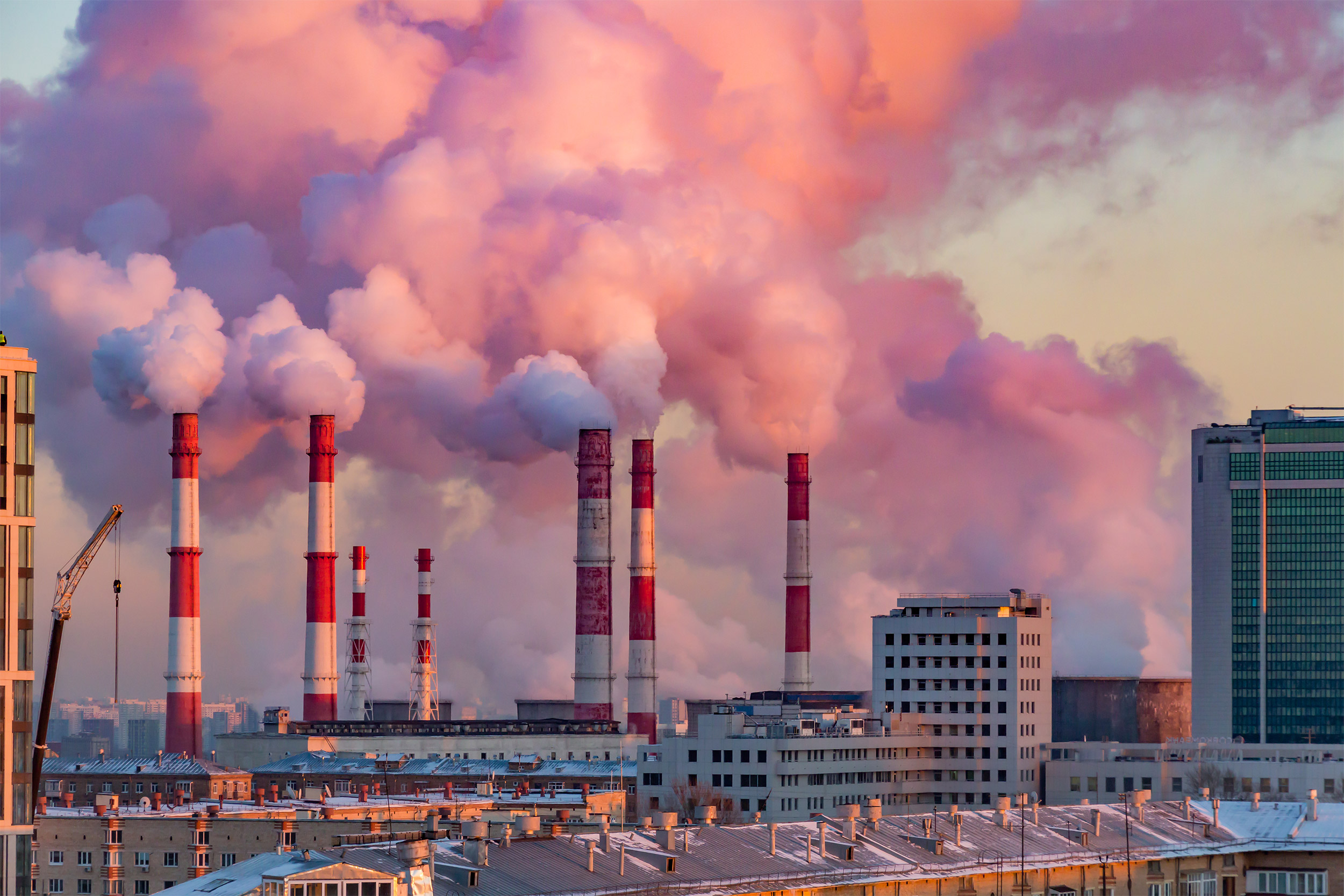
A new Harvard study uses 17 years of data to examine exposure to air pollution among racial, ethnic minorities, and low-income groups in the U.S.
iStock by Getty Images
Race still a factor in air pollution exposure
New study focuses on disparities across racial, ethnic and income groups in America
Certain groups in the U.S. — Blacks, Asians, Hispanics, Latinos, and low-income populations — are being exposed to higher levels of dangerous fine particulate air pollution (PM2.5) than other groups, according to new research from Harvard T.H. Chan School of Public Health.
In collaboration with the Environmental Systems Research Institute, the study authors developed a new platform linking 17 years’ worth of demographic data with data on fine particulate pollution from across the U.S., and created unique visualizations, that shine a light on the stark disparities in air pollution exposure among racial/ethnic and income groups in America.
The study was published Jan. 12 in the journal Nature.
“Our study, which highlights the relative disparities in PM2.5 exposure in the U.S., is particularly timely given current crises the country is facing, such as a reckoning with racism as well as disparities in COVID-19 outcomes,” said Francesca Dominici, Clarence James Gamble Professor of Biostatistics, Population, and Data Science at the Harvard Chan School and senior author of the study.
Previous research has shown that racial and ethnic minorities and lower-income groups in the U.S. are at higher risk of premature death from exposure to PM2.5 air pollution than other population and income groups. It’s also been shown that there are disparities in exposure to air pollution among these groups.
The new study took a deeper dive into the issue of exposure by focusing on relative disparities across income groups and racial/ethnic groups. The researchers linked demographic data from the U.S. Census Bureau and American Community Survey for the years 2000 through 2016 with U.S.-wide PM2.5 data estimated from machine learning models based on satellite observations and atmospheric chemistry models. The data was analyzed for the nation’s 32,000 ZIP code tabulation areas (ZCTA).
Under current federal air pollution standards, the annual maximum recommended exposure to PM2.5 is 12 micrograms per cubic meter of air (μg/m3). The researchers found that, on average across the U.S., PM2.5 concentration levels fell from 2000 to 2016, with average exposure falling from 12.6 μg/m3 to 7.5 μg/m3 — a 40.4 percent drop. They also found that the percentage of the population exposed to PM2.5 levels higher than 12 μg/m3 decreased from 57.3 percent in 2000 to 4.5 percent in 2016.
But the findings showed that, despite reductions in PM2.5 levels over the years, disparities in exposure have persisted.
The researchers found that areas of the U.S. where the white and Native American populations are overrepresented have been consistently exposed to average PM2.5 levels that are lower than those in areas where Black, Asian, and Hispanic or Latino populations are overrepresented.
For example, in 2016, the average PM2.5 concentration for the Black population was 13.7 percent higher than that of the white population and 36.3 percent higher than that of the Native American population. Further, the study found that, as the Black population increased in a particular ZCTA, so did the PM2.5 concentration, with a steep incline seen for ZCTAs where more than 85 percent of the population was Black. The trend for Hispanic and Latino populations was similar. But for the white population, the opposite was seen: The PM2.5 concentration decreased as the density of the white population increased in a particular ZCTA.
The researchers also found that, from 2004 to 2016, areas of the U.S. with lower income groups have been exposed to higher average PM2.5 levels than areas with higher income groups. In addition, relative disparities in exposure to PM2.5 in relation to safety standards set by the U.S. Environmental Protection Agency and the World Health Organization have been increasing over time among racial/ethnic groups, according to the study.
“Our findings regarding relative disparities indicate the importance of strong, targeted air-pollution-reduction strategies, not only to reduce overall air-pollution levels but also to move closer toward the EPA’s aim to provide all people with the same degree of protection from environmental hazards,” said Abdulrahman Jbaily, a former postdoctoral researcher at Harvard Chan School and first author of the study.
Other Harvard Chan School co-authors of the study included Leila Kamareddine and Stéphane Verguet.
Funding for the study came from the Health Effects Institute (4953-RFA14-3/16-4), the National Institutes of Health (DP2MD012722, P50MD010428), the National Institutes of Health and Yale University (R01MD012769), the National Institutes of Health and National Institute of Environmental Health Sciences (R01 ES028033, R01ES026217, R01AG066793-01, R01ES029950, R01ES028033-S1), the National Institutes of Health and Columbia University (1R01ES030616), the Environmental Protection Agency (83587201-0), The Climate Change Solutions Fund, and a Harvard Star Friedman Award.





